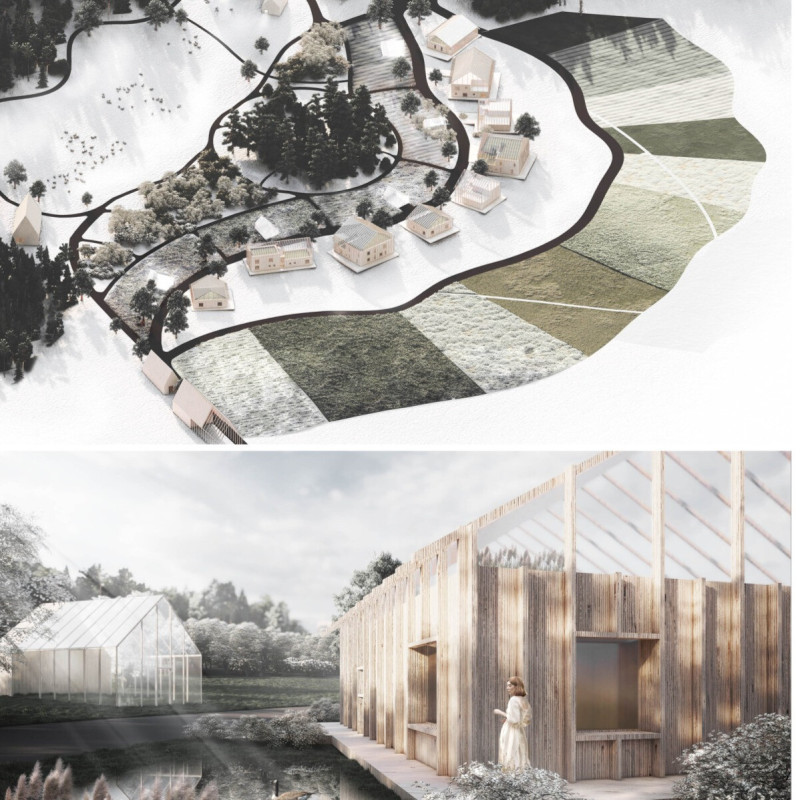5 key facts about this project
The eco-village design located in Canada represents a thoughtful approach to sustainable living by combining both residential and farming areas within a rural context. This project seeks to enhance self-sufficiency and environmental balance while creating a community focused on health and effective resource use.
Architectural Concept
The layout of the eco-village is carefully structured, placing agricultural zones at a higher level than the residential areas. This design choice allows easy access to food production facilities, supporting daily life and interactions among residents. Organic pathways connect these spaces, encouraging movement throughout the village and fostering a sense of community.
Diverse Housing Types
Various housing types are incorporated into the design to meet different needs and preferences. Options range from larger units for families to more compact residences that emphasize sustainability. Each housing style promotes a lower use of resources and encourages social interactions, ensuring the community remains unified and responsive to its residents.
Sustainable Materials and Resource Management
Materials used in the buildings reflect the project's commitment to eco-friendliness. The design primarily features wooden construction that makes use of recycled materials, which helps reduce its environmental footprint. Glass surfaces are fitted with perovskite cells, which generate clean energy for the community. Additionally, a biogas plant is included, making the village self-sufficient in terms of energy while minimizing ecological impact.
Water Collection and Agricultural Integration
Water management plays a significant role in the overall design. Farmlands are located at the lower part of the village, supported by a watertank that collects rainwater and run-off from local canals. This system is pivotal for irrigation, reinforcing the village's goal of self-sufficiency. Shared facilities, such as gardens and recreational spaces, are distributed throughout, nurturing social connections among residents and strengthening the community's spirit.
The thoughtful inclusion of rainwater collection systems allows for responsible irrigation practices that contribute positively to the ecological balance of the village. This approach highlights a practical commitment to sustainability while also serving the daily needs of residents.


















































